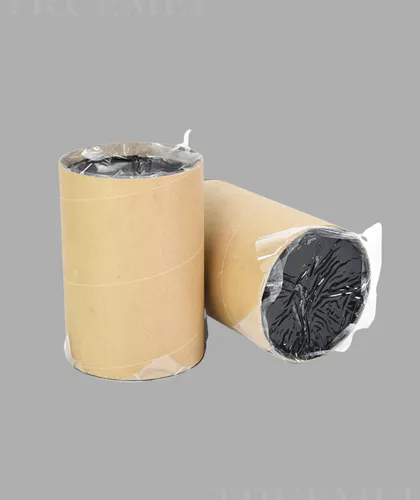Why Is Butyl Sealant a Must-Have for Construction and Repair Projects?
2024-11-22
When it comes to construction, automotive repairs, or even DIY home projects, one of the unsung heroes of sealing materials is butyl sealant. While often overshadowed by other materials like silicone or epoxy, butyl sealant offers unique properties that make it indispensable for many applications. But what exactly is butyl sealant, and why should it be a key component in your toolkit?
In this blog, we will explore the benefits of butyl sealant, its uses, and why it is favored in various industries for its reliability and versatility.
1. What is Butyl Sealant?
Butyl sealant is a synthetic rubber-based adhesive that is designed for sealing and bonding in a wide range of applications. It is known for its excellent adhesion, flexibility, and waterproofing properties. Butyl sealants are primarily used to seal joints and gaps, especially where movement is expected. Unlike some other types of sealants, butyl sealant remains flexible after curing, making it ideal for areas that experience vibration or movement.
These sealants are available in both liquid and tape forms and can be applied in various weather conditions, making them a go-to option for both indoor and outdoor projects.
2. Why Choose Butyl Sealant Over Other Sealants?
Durability and Flexibility
Butyl sealant is highly durable and can maintain its performance even under harsh conditions. Its flexibility allows it to expand and contract with the material it is applied to, making it an ideal choice for areas that may experience temperature fluctuations or physical movement. This ability to move without cracking ensures long-term sealing effectiveness.
Excellent Water Resistance
One of the standout features of butyl sealant is its superior resistance to water and moisture. It forms a tight, waterproof seal that helps protect surfaces from water damage. This makes it especially useful in applications such as roofing, windows, and automotive sealing, where moisture can cause significant issues if not properly sealed.
Weatherproof and UV Resistant
Butyl sealant is resistant to UV rays and extreme weather conditions, including rain, snow, and intense sunlight. Its ability to withstand temperature fluctuations, from hot summers to freezing winters, ensures that it remains effective throughout the year. This quality makes it a reliable choice for both outdoor and indoor applications.
Adhesion to Various Surfaces
Butyl sealant has excellent adhesion to a wide variety of materials, including metals, plastics, glass, wood, and concrete. This makes it a versatile choice for many different projects, from sealing windows and doors to automotive repairs and roofing jobs.
3. Common Applications of Butyl Sealant
Roofing
Butyl sealant is widely used in the roofing industry to seal seams and joints, ensuring that water does not seep through. It is ideal for both commercial and residential roofing, where waterproofing is critical to protect the structure.
Windows and Doors
When installing windows and doors, butyl sealant is often used to create a waterproof barrier. Its flexibility and waterproof properties prevent leaks and drafts, improving energy efficiency and protecting the building from water damage.
Automotive Industry
In the automotive industry, butyl sealants are used to seal windshields, sunroofs, and other glass parts. Their ability to withstand vibration and movement makes them an excellent choice for automotive applications, where long-lasting, reliable seals are essential for safety and comfort.
HVAC Systems
Butyl sealant is commonly used to seal ducts and pipes in heating, ventilation, and air conditioning (HVAC) systems. Its ability to resist air and moisture infiltration helps maintain the efficiency of these systems.
Marine Applications
Butyl sealant’s waterproof and UV-resistant properties make it a popular choice in marine environments. It is used to seal boat hulls, decks, and windows, preventing water from entering the vessel and causing damage.
4. How to Apply Butyl Sealant?
Applying butyl sealant is relatively straightforward, but there are a few key steps to ensure a successful bond:
- Surface Preparation: Clean the surface thoroughly before applying the sealant. Remove any dust, dirt, or grease, as these can affect the adhesion of the sealant.
- Cutting the Nozzle: If using a tube, cut the nozzle to the desired size and angle. This helps control the flow of sealant for precise application.
- Application: Apply the butyl sealant in a continuous bead along the joint or gap that needs to be sealed. Use a caulk gun or your hands to apply the sealant, ensuring that it fills the gap completely.
- Smooth the Surface: After applying the sealant, use a smoothing tool or your finger to smooth it out. This helps create a clean, uniform seal.
- Allow to Cure: Let the sealant cure according to the manufacturer’s instructions. Typically, butyl sealant requires several hours to dry, but full curing may take up to 24 hours, depending on the thickness of the application.
5. What Makes Butyl Sealant Safe and Environmentally Friendly?
Butyl sealants are considered safer than some other industrial sealants, as they do not contain harmful solvents or chemicals that can pose a risk during application. They are often favored in applications where exposure to toxic chemicals needs to be minimized. Moreover, some butyl sealants are designed to be environmentally friendly, with low VOC (Volatile Organic Compound) emissions, making them safer for both the user and the environment.
6. Conclusion
Whether you’re working on a home renovation, automotive repair, or outdoor project, butyl sealant is an invaluable tool to ensure long-lasting, waterproof, and flexible seals. Its durability, resistance to the elements, and ability to bond to various surfaces make it a top choice for professionals and DIY enthusiasts alike. The next time you're tackling a project that requires a reliable seal, consider adding butyl sealant to your toolkit. It's a must-have material that can save you time, effort, and costly repairs down the line.



